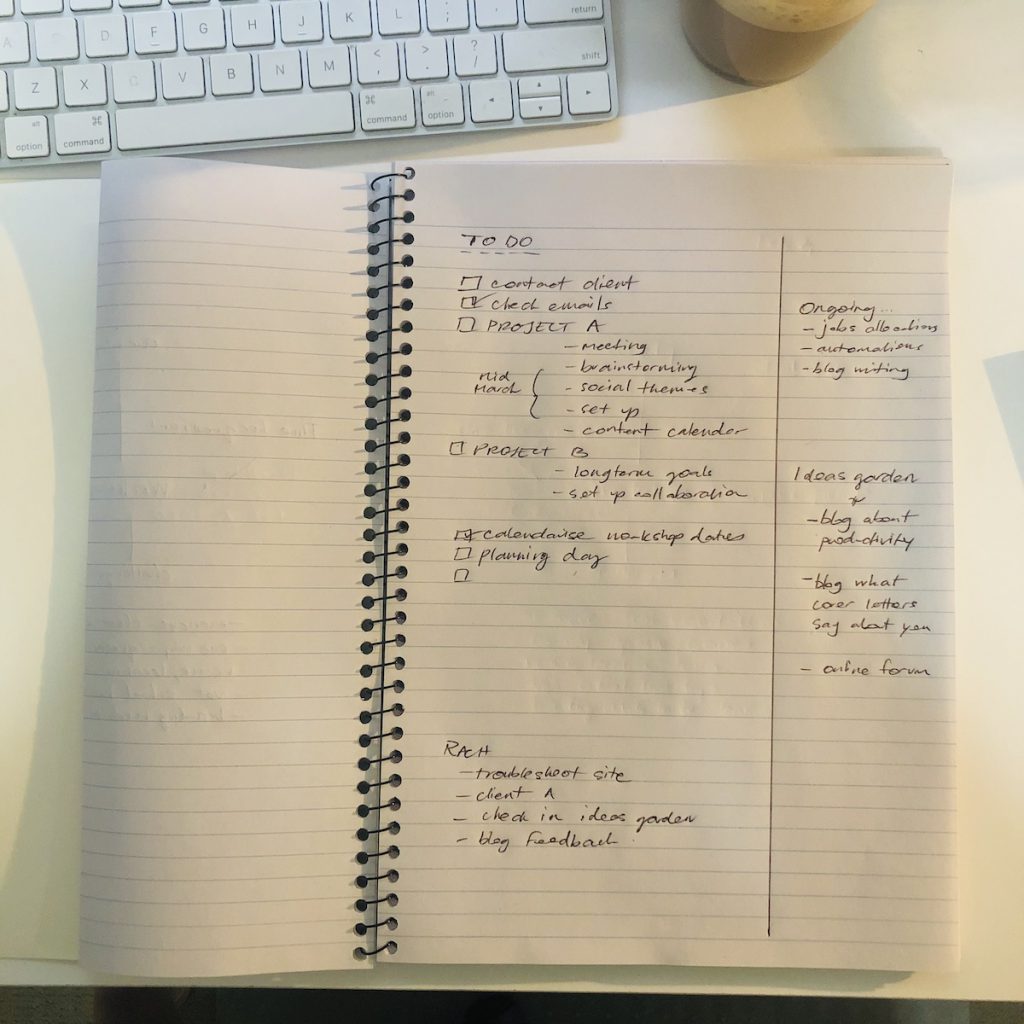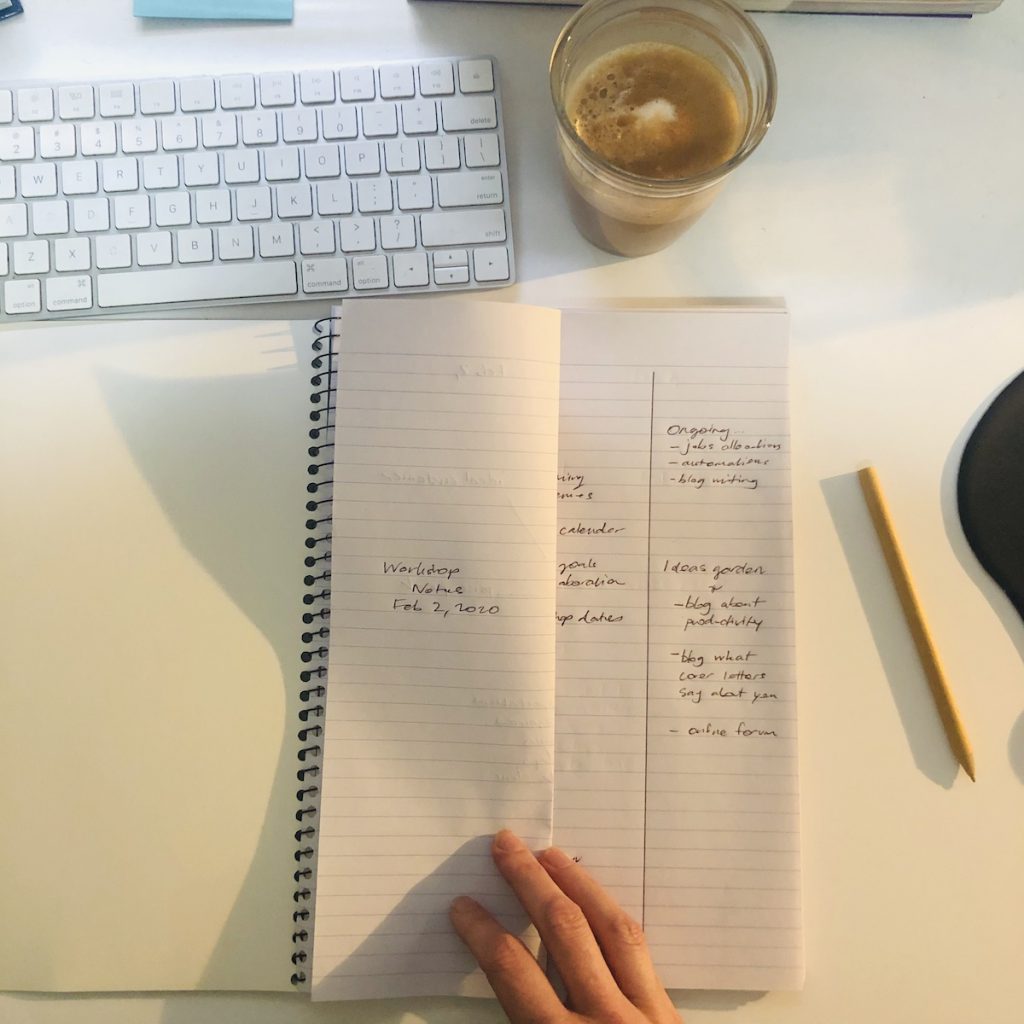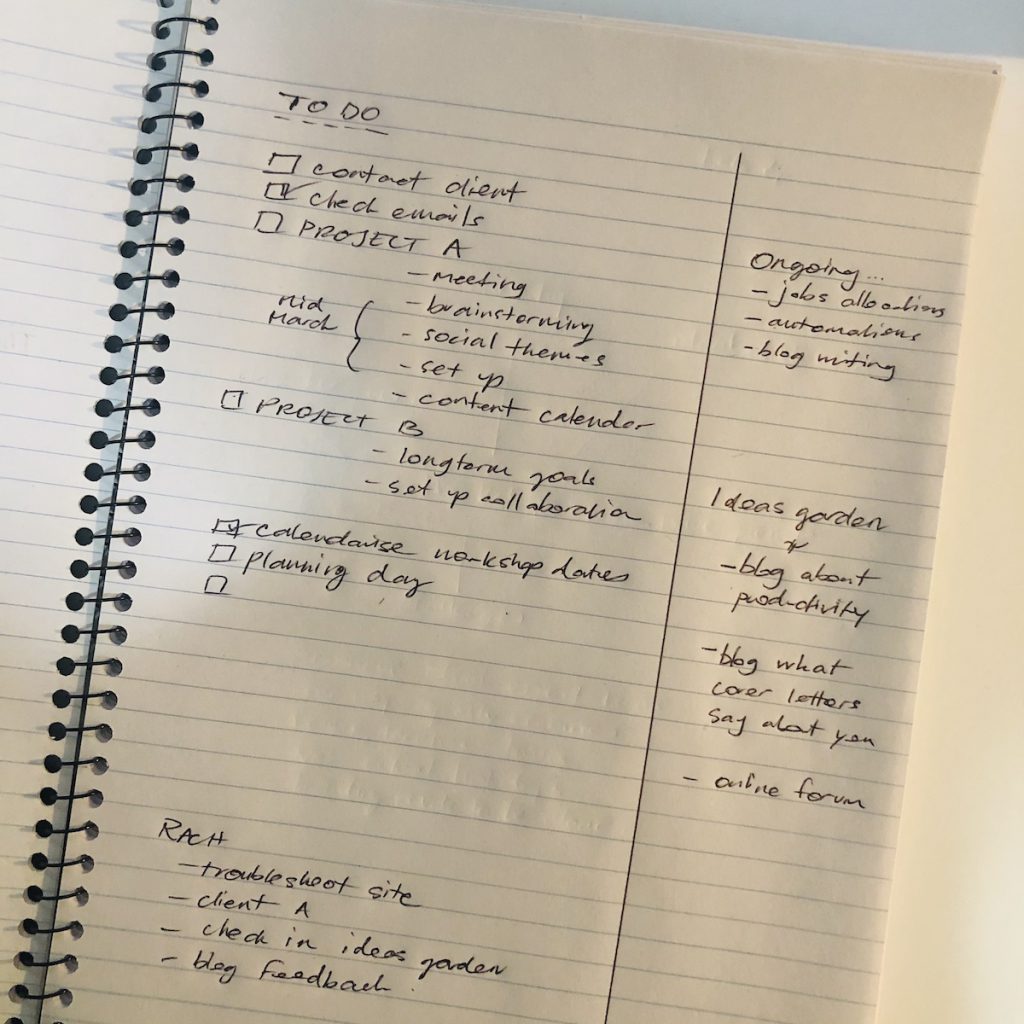

by Claire Chow
28 February 2020
As any freelancer will know, if you’re not organised – you’re toast.
And in my average work day, there are ideas to be cultivated, projects to plan, social to schedule, content to write, tasks to be actioned, and several never ending to-do lists with overlapping priorities. After trying a variety of systems, here’s how I keep all the balls in the air: I use a bullet journal for my client management.
This method helps me track short and long term goals and it’s not just a great way for freelancers to keep on track – it also means that whenever I open a client’s notebook, I walk into their virtual office.
Bullet journals work for juggling multiple clients, and while it may seem a little old school, pen and paper has its benefits. Hand-writing allows me to think more clearly and I can problem solve in a creative way. When I write it down, I remember it. And when I add writing it down to the whole bullet journal concept, I have the method that works for me.
I have a stack of notebooks in my home office dedicated to different clients. Each journal is a treasure trove of works-in-progress, client notes, brainstorming, to-do lists, ideas and wish-lists.
I’m not fussy about the type of notebook; in fact, the cheaper, the better. If the notebook is beautiful, I’ll aim for perfection and for the type of work I do (social, content and big-picture marketing) creativity is messy – and so I’ve found practical, lined A4 notebooks work best for me.
Note, I only write on the right hand page. I’ll explain why soon.

I start with a page which lists (in bullet points) every project and relating tasks. Each item has a hand drawn box which I can tick off when complete, and on the right hand side of this page I take notes of ‘ideas’ for the future.

I’ll use other pages in the journal for client chats and fleshing out ideas. But rather than having endless pages to flip through, (and this is why I only write on the right hand page) I fold inwards this page and write what the page is about. For eg, ‘Social Feb 2020’. This means, if I need to check my notes, I can find the relating page fairly easily.
Once my tasking page (to-do) is full or mostly complete I transcribe my current tasks onto a new page and inward fold the old one and name it for future use.

The fold-over pages are really the bit that works for me with this system. If my client wants to revisit a campaign we talked about 3 months ago, it’s easy to flip to the right section in my bullet journal, rather than scrambling to find the right section and the notes I took.
This bullet journal has completely changed my mindset. It helps me stay accountable with clients, keeps me completely organised and on top of what they want from me, and enables me to carve out a more sustainable way of working.
I’ve always been pretty good at multitasking but when I started to run with this method, I found I could better focus on my clients’ needs, and create more time for what matters. Hence, FRIYAY with the kids is a regular event!
Everyone has their own way of working, though, and it’s good if you’re a one-person bizz servicing a number of clients. If you collaborate on projects I’d recommend going digital – with Trello or Asana or another hi-tech project management system. It’s important to find a system that works for you (and you may have to try quite a few before you crack it).
Do you use bullet journals for your client management? Tell us about your favourite productivity system?